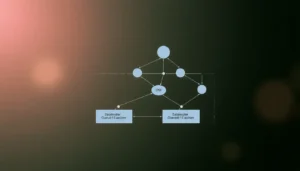Tesla Model Y L Launch: Expanding Offerings Amidst China's EV Race
- THE MAG POST

- Aug 22
- 8 min read

Tesla is making significant moves in the Chinese market, signaling the upcoming launch of its Model Y L, a six-seat variant of its popular electric SUV. This strategic expansion comes as the company faces increasing competition from domestic players, including Xiaomi's recently launched SU7, and a recent dip in its July sales figures for China-made vehicles. The introduction of the Model Y L, featuring a longer wheelbase to accommodate the extra seating, is a direct response to evolving consumer demands for more versatile family vehicles. This move is critical for Tesla as it aims to maintain its market share and reinforce its position in one of the world's most vital electric vehicle markets.
Furthermore, Tesla is reportedly preparing to introduce a longer-range, rear-wheel-drive version of its Model 3 into China, according to filings with the country's industry ministry. These developments highlight Tesla's commitment to adapting its product lineup to meet the specific needs and preferences of Chinese consumers. As the EV landscape continues to intensify, with aggressive pricing strategies and rapid technological advancements from competitors, Tesla's ability to innovate and offer compelling value propositions will be key to its continued success and growth in this dynamic market.
Tesla Gears Up for Model Y L Launch in China Amidst Fierce EV Competition
Tesla is signaling a significant expansion of its electric vehicle lineup in China with the imminent release of the Model Y L. This new iteration is set to offer a six-seat configuration, a notable enhancement over its current popular Model Y. The announcement, made via Tesla's official Weibo account, confirms previous registrations and builds anticipation for the vehicle's arrival in one of the world's most crucial automotive markets. The introduction of the Model Y L is strategically timed to address the evolving demands of consumers and bolster Tesla's competitive stance against a rapidly growing field of domestic and international EV manufacturers.
The Strategic Importance of the Model Y L in the Chinese Market
The Chinese electric vehicle market is a dynamic and intensely competitive landscape. Tesla, a pioneer in the EV space, is keen to maintain its market share and appeal to a broader demographic. The Model Y L, with its increased seating capacity, is designed to cater to families and those seeking more versatile vehicle options. This move comes as Tesla navigates a challenging period, marked by a recent dip in sales figures for its China-made vehicles. The introduction of new models like the Model Y L is a proactive strategy to counter the aggressive pricing and innovative offerings from competitors, such as Xiaomi's recently launched SU7.
Expanding Tesla's Family-Friendly Offerings
The decision to introduce a six-seat variant of the Model Y is a direct response to consumer preferences and market trends. As families grow or group travel becomes more common, the demand for vehicles that can comfortably accommodate more passengers increases. The Model Y L's longer wheelbase is a key feature that enables this enhanced seating arrangement, promising a more spacious and comfortable experience for all occupants. This strategic enhancement aims to make the Model Y platform even more attractive to a wider audience in China, potentially capturing a segment of the market that values practicality and passenger capacity.
The inclusion of a third row of seating, transforming the Model Y into a six-seater, positions it as a more direct competitor to other family-oriented SUVs and electric vehicles already established in the Chinese market. Tesla's commitment to adapting its product offerings to local market demands is crucial for its continued success. By providing a longer-wheelbase version with increased seating, Tesla is not just refreshing its lineup but also making a strategic play to capture a larger share of the family car segment, further solidifying its presence in China.
Navigating Market Challenges and Competitive Pressures
Tesla's sales performance in China experienced a downturn in July, with a reported 8.4% decrease in sales of its domestically produced vehicles. This dip is occurring amidst an intense price war initiated by various automakers, which has significantly impacted profitability across the industry. Chinese EV manufacturers, in particular, have been aggressive in offering more affordable models, putting pressure on established players like Tesla. The company's ability to adapt and innovate, such as with the upcoming Model Y L and a longer-range Model 3, will be critical in overcoming these challenges and maintaining its growth trajectory.
The Impact of Price Wars on EV Manufacturers
The ongoing price war in the electric vehicle sector has created a challenging environment for all manufacturers, including industry leaders like Tesla. As competitors introduce lower-priced alternatives, companies are forced to re-evaluate their pricing strategies and production costs. This intense competition not only affects sales figures but also impacts profit margins and investment in research and development. Tesla's strategy to counter this includes introducing new, potentially higher-margin variants like the Model Y L, alongside more efficient production methods and potentially adjusted pricing for existing models.
The market dynamics in China are particularly sensitive to price, and consumers often weigh cost-effectiveness heavily when making purchasing decisions. Tesla's challenge is to balance its premium brand image and technological innovation with the need to remain competitive in a price-sensitive market. The success of the Model Y L and other upcoming models will largely depend on their ability to offer compelling value propositions that justify their price points, even as competitors continue to push the boundaries of affordability in the EV space.
Anticipated Enhancements and Future Model Releases
Beyond the Model Y L, Tesla is also preparing to introduce a longer-range, rear-wheel-drive variant of its Model 3 to the Chinese market. This information emerged from filings made with China's industry ministry, indicating a broader strategy to refresh and expand its model offerings. These upcoming releases signify Tesla's commitment to staying at the forefront of the EV revolution in China, catering to diverse consumer needs and preferences. The company aims to leverage these new models to invigorate sales and reinforce its position as a leader in the electric automotive sector.
The Evolving Tesla Model 3 for the Chinese Market
The planned introduction of a new Model 3 variant, specifically a longer-range, rear-wheel-drive version, signals Tesla's ongoing efforts to refine its popular sedan for the Chinese consumer. This iteration is expected to offer improved efficiency and extended driving range, addressing a key concern for many EV buyers. By expanding the Model 3's appeal, Tesla aims to attract a wider customer base and potentially boost sales of this foundational model within its lineup. The details from the industry ministry filings underscore the company's diligent approach to product development and market penetration.
The strategic release of these updated and new models highlights Tesla's adaptability in a rapidly evolving automotive industry. The company understands that maintaining a competitive edge requires continuous innovation and a keen awareness of consumer demands. The upcoming Model Y L and the enhanced Model 3 are testaments to Tesla's forward-thinking approach, designed not only to meet current market expectations but also to anticipate future trends in electric mobility. These developments are crucial for Tesla's sustained growth and influence in the global EV market, particularly in China.
Tesla's Response to Growing Competition and Market Dynamics
Tesla is actively responding to the increasing competition in the electric vehicle market, particularly from domestic Chinese brands that are aggressively pushing lower-priced alternatives. The company's strategy involves not only introducing new models but also potentially adjusting its approach to pricing and product features to remain competitive. The recent sales figures indicate the pressure Tesla is under, making the successful launch and market reception of models like the Model Y L and the updated Model 3 critically important for its future performance in China.
The Challenge of Competing with Aggressive Pricing Strategies
The core of Tesla's challenge lies in its ability to compete with the aggressive pricing strategies employed by many Chinese EV manufacturers. These companies often have lower overheads and benefit from government support, allowing them to offer vehicles at significantly lower price points. Tesla must find a way to maintain its premium positioning while also offering compelling value. This could involve optimizing its supply chain, increasing production efficiency, or strategically segmenting its market to appeal to consumers who prioritize technology and brand reputation over the lowest possible price.
The introduction of the Model Y L and the enhanced Model 3 are key components of Tesla's strategy to navigate this competitive landscape. By offering new features and configurations, Tesla aims to differentiate its products and justify its pricing. The company's success will depend on its ability to strike a delicate balance between innovation, performance, and affordability, ensuring that its vehicles remain attractive to a broad spectrum of Chinese consumers in the face of relentless competition.
Key Takeaways for Tesla's Chinese Market Strategy
Tesla's forthcoming Model Y L and updated Model 3 variants underscore a strategic pivot to meet the evolving demands of the Chinese electric vehicle market. Facing intensified competition and a recent sales dip, the company is focusing on product differentiation and expanded offerings. The six-seat Model Y L aims to capture the family segment, while the longer-range Model 3 targets efficiency-conscious buyers. These moves are critical for Tesla to maintain its market leadership and navigate the aggressive pricing strategies of domestic competitors, signaling a dynamic approach to growth in one of the world's most important automotive markets.
Strategic Product Evolution in a Competitive Arena
Tesla's decision to introduce the Model Y L, a six-seat version of its popular SUV, and a more efficient Model 3 variant demonstrates a keen understanding of market dynamics. By expanding its product portfolio, Tesla is aiming to broaden its appeal, catering to diverse consumer needs such as family transport and extended driving range. This strategic evolution is a direct response to the competitive pressures from manufacturers like Xiaomi, which are rapidly gaining traction with innovative and attractively priced electric vehicles. Tesla's ability to adapt its offerings is paramount for sustained success.
The company's focus on enhancing its existing models and introducing new configurations reflects a proactive strategy to stay ahead. The success of these new models will be a key indicator of Tesla's ability to adapt its global strategies to the specific nuances of the Chinese market. By continuously innovating and responding to consumer feedback, Tesla aims to solidify its position as a dominant force in the electric vehicle sector, even as the competitive landscape becomes increasingly challenging.
Adapting to Market Pressures and Consumer Demands
The current market conditions in China necessitate a responsive and adaptive strategy from all automotive players, including Tesla. The intense price war, coupled with the rapid advancement of technology by competitors, requires manufacturers to be agile. Tesla's introduction of the Model Y L and the enhanced Model 3 are critical steps in this adaptation process. These vehicles are designed to offer greater value and meet specific consumer needs, thereby strengthening Tesla's competitive edge.
Ultimately, Tesla's future in the Chinese market will hinge on its ability to consistently deliver innovative, high-quality electric vehicles that resonate with consumers. The company must balance its premium brand identity with the need to remain accessible and competitive. The successful rollout of the Model Y L and the updated Model 3 will be crucial in demonstrating Tesla's resilience and its capacity to thrive amidst the evolving landscape of the global electric vehicle industry.
Aspect | Details | Significance |
New Model Announcement | Tesla Model Y L | Six-seat variant with a longer wheelbase, catering to family needs. |
Market Strategy | China Launch | Targeting one of the world's largest and most competitive EV markets. |
Competitive Landscape | Increased Rivalry | Facing competition from brands like Xiaomi and aggressive pricing strategies. |
Sales Performance | July Figures | Reported 8.4% fall in sales for China-made vehicles, indicating market pressure. |
Additional Model | Model 3 Variant | Longer-range, rear-wheel-drive version planned for the Chinese market. |
Key Challenge | Price Competition | Balancing premium brand image with the need to compete on affordability. |
Strategic Goal | Market Share Retention | Utilizing new models to invigorate sales and maintain leadership. |
From our network :
3D Printing from a NumPy Array: Converting a Numpy Array to STL for 3D Printing
Displaying Plotly Graphs in a Standalone Window: A Comprehensive Guide
Optimizing Pandas Column Multiplication: Efficient Interval Mapping Techniques
The Future of Medicine: Breakthroughs in Biotechnology and Genetic Engineering
Derive the Mean or Expected Value of Random Variable that has Poisson Distribution






















































Comments